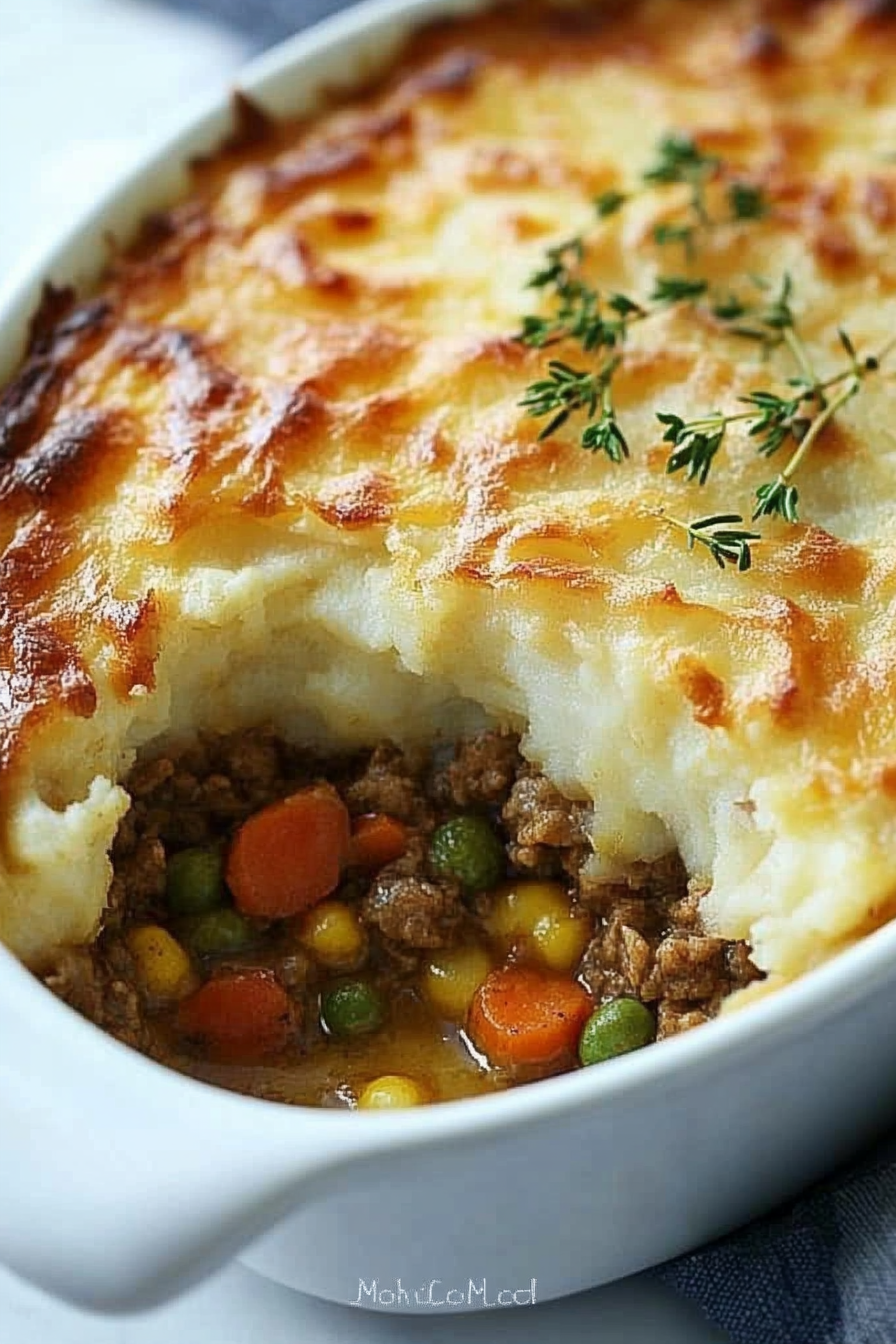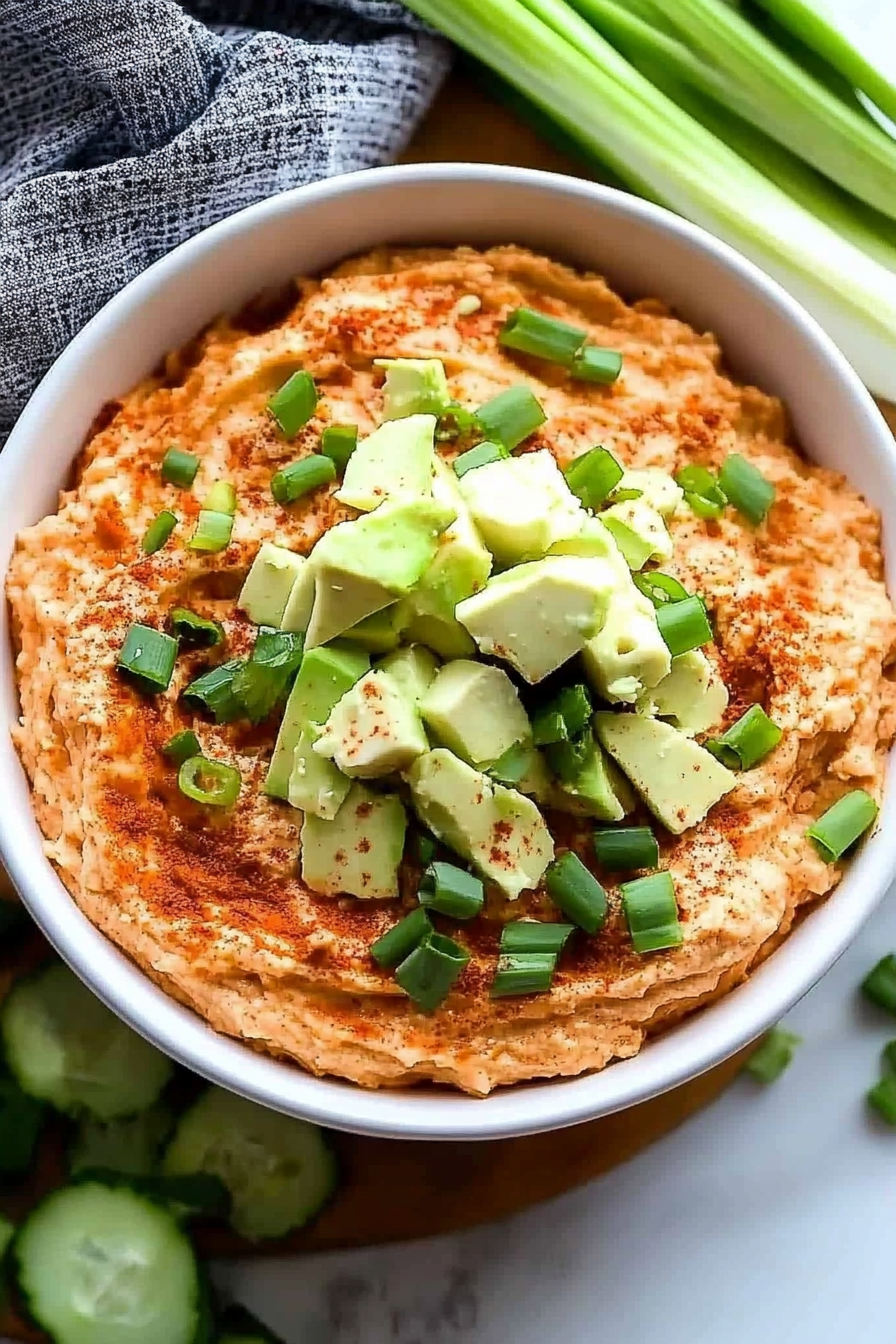I still remember the way the grill crackles to life in late spring, the air smelling like lemon, oregano, and sunshine. My grandmother’s kitchen carried that same warm glow, and this Greek Chicken Souvlaki is her spirit in my own skillet and garden grill. It’s the kind of recipe that feels like a hug—bright, fresh, and somehow easier than it looks. I always do this when I’m craving something that tastes like a vacation but won’t derail my weeknight schedule. The tangy, herb-laced marinade soaks into juicy chicken, the peppers and onions crisp up just right, and the garlic yogurt sauce ties everything together like a cozy, flavorful blanket. If you’ve ever compared a quick kebab night to ordering takeout, you’ll know the difference: home-cooked, vibrant, and deeply comforting. This dish is my go-to when friends swing by or when I want a memorable, family-friendly dinner that doesn’t require a long recipe card. It’s a little life hack, a little love letter to summer on a plate, and it never fails to make the kitchen feel like a celebration.
What is Greek Chicken Souvlaki?
Think of Greek Chicken Souvlaki as marinated, skewered chicken that’s grilled to perfection and served with bright, herby accompaniments. The name comes from the Greek word souvli, meaning “skewer,” and it’s essentially street-food-in-a-home-kitchen form. The concept is simple: juicy chicken mingles with garlic, lemon, oregano, olive oil, and a touch of yogurt; the skewers build layers of color with onions and bell peppers; a cool, garlicky tzatziki or yogurt-lemon sauce finishes the plate. It’s approachable enough for a weeknight but festive enough to serve to guests. My version keeps the spirit intact—crisp-tender chicken, a zippy marinade, and a sauce that makes every bite feel special. And yes, you can swap in chicken thighs for extra juiciness if you’ve got them on hand.

Why you’ll love this recipe?
What I love most about this Greek Chicken Souvlaki is how it hits so many notes at once. It’s bold yet bright, simple yet impressive, and incredibly forgiving for home cooks who want big flavor without fuss. Here’s why it tends to disappear from the plate in minutes at my house:
- Flavor:What is marinade? Lemon, garlic, oregano, and olive oil. It permeates the chicken so you get a citrusy
- Simplicity:What are the steps to make a skewer?
- Cost-efficiency: This dish leans on pantry staples—garlic, lemon, olive oil, dried oregano—so it won’t blow up your grocery budget. A little goes a long way, making a big flavor payoff.
- Versatility: It doubles as a party platter, a quick weeknight supper, or a make-ahead option for a picnic. Leftover chicken is fantastic in wraps, salads, or stuffed pita pockets.
What I find especially comforting is how adaptable it feels. My kids love it with extra tzatziki and warm pita; my spouse likes it with a squeeze of fresh lemon over the top. And the smell—oh, the smell—when the grill or oven starts to caramelize the edges, you’ll know you’ve got a keeper.
How to Make Greek Chicken Souvlaki
Quick Overview
This is a “all-in-one” flavor party: whisk together the marinade, coat the chicken chunks, thread them onto skewers with a few onions and bell pepper pieces, and grill or bake until they’re juicy and kissed with a bit of char. The beauty is in the timing and balance: you want the chicken to stay juicy while the edges get a crisp, caramelized edge. If you’re short on time, you can marinate for as little as 30 minutes, but an overnight soak will deepen the lemony-herbal brightness. Serve with a cool tzatziki or garlic yogurt, pita wedges, and a quick Greek salad for a complete, vibrant meal.
Ingredients
For the Marinade (Main Marinade):
– 1.5 to 2 pounds boneless skinless chicken breast or thighs, cut into 1-1.5 inch chunks
– 3 cloves garlic, minced
– Zest and juice of 1 large lemon
– ¼ cup extra-virgin olive oil
– 1 tablespoon red wine vinegar (optional for brightness)
– 1 tablespoon dried oregano (or 2 tablespoons fresh, finely chopped)
– 1 teaspoon smoked paprika (optional for a deeper color)
– ½ teaspoon salt, ¼ teaspoon black pepper
– Pinch of Red Pepper flakes (optional for a gentle kick)
For the Filling (Vegetables):
– 1 large red onion, cut into thick wedges
– 1-2 bell peppers (any color), cut into 1-inch strips
– Optional: cherry tomatoes or zucchini slices for extra color and moisture
For the Glaze (Finish & Sauce):
– ½ cup Greek yogurt (full-fat if you can, for creaminess) or tzatziki to serve
– 1 tablespoon lemon juice
– 1 small garlic clove, grated or minced
– 1 tablespoon chopped fresh dill or parsley (optional but delightful)
– Salt to taste
– A drizzle of olive oil to loosen the glaze if needed

Step-by-Step Instructions
Step 1: Preheat & Prep Pan
If you’re grilling, preheat your grill to medium-high heat (about 400-450°F). If you’re using the oven, preheat to 425°F and line a sheet pan with parchment or a nonstick sheet. This is the part that makes me look like I’ve got it all together—the kitchen already smells amazing before the first bite. Have a bowl handy for the marinated chicken, a tray for skewering, and a small bowl for the glaze so everything comes together quickly.
Step 2: Mix Dry Ingredients
In a small bowl, whisk together the oregano, salt, pepper, paprika (if using), and a pinch of red pepper flakes. This is your dry guard—your dry-ingredient rhythm that gets folded into the wet later, giving you that classic Greek herb-forward aroma without overcomplicating things.
Step 3: Mix Wet Ingredients
In a larger bowl, combine the olive oil, lemon zest, lemon juice, minced garlic, and the dry spice blend. Give it a quick whisk until it’s emulsified and glossy. The lemon and garlic should wake up the olive oil, then the oregano joins in like a chorus line—you’ll know it’s ready when you can practically smell the bright, earthy notes wafting up from the bowl.
Step 4: Combine
Fold the chicken into the marinade until every piece is coated. If you’ve got time, cover and refrigerate for 2–4 hours (or overnight). I love marinating overnight because it makes the chicken so juicy and infused with those Greek flavors. If you’re pressed, 30 minutes will still yield delicious results—the acid from the lemon helps tenderize and brighten in a pinch.
Step 5: Prepare Filling
While the chicken marinates, prep the vegetables. I like to keep peppers and onions chunky for the grill so they get a good bite and a subtle caramelization. You can toss the veggies with a splash of olive oil, a pinch of salt, and a whisper of oregano so they echo the chicken’s flavors while they cook.
Step 6: Layer & Swirl
Thread the chicken pieces onto skewers, alternating with onion wedges and pepper strips. Don’t crowd them—leave a little space between chunks so heat can circulate and you get that lovely char. If you’re using wooden skewers, soak them in water for 20–30 minutes to prevent them from burning. This is the moment I secretly lean in and inhale deeply—the scent is a promise of the feast to come.
Step 7: Bake
Line a sheet pan with foil if you like for easy cleanup. Bake for 12–15 minutes on the middle rack, then flip the skewers and bake another 6–8 minutes, or until the chicken is just cooked through and still juicy. If you’re grilling, you’ll be looking for a nice char and an internal temperature around 165°F. The benefit of the oven is predictable results every time, while the grill adds that irresistible smoky kiss. Either way, you’re aiming for lightly charred edges and tender meat.
Step 8: Cool & Glaze
While the skewers rest for about 5 minutes, whisk together the glaze ingredients until smooth. If you want a lighter finish, you can thin the glaze with a little water or extra lemon juice. Drizzle or dip just before serving so the glaze remains glossy and bright. A dollop of yogurt on the side keeps things creamy and balanced, and it’s a lovely contrast to the warm, toasty chicken.
Step 9: Slice & Serve
Let the skewers rest briefly, then slide the chicken off the skewers onto a warm plate. Slice a few pieces to check for juiciness if you’re unsure—and you’ll know you’ve nailed it when the juices run clear and the edges have that delicate blistered look. Serve with warm pita, a heaping scoop of tzatziki or lemon yogurt, and a crisp Greek salad. The first bite should feel like a vacation you never want to end.
What to Serve It With
When I’m hosting, I love building a little Greek spread around these skewers. It’s all about bright colors, crisp textures, and cool contrasts that keep the heat on the plate from getting overwhelming.
For Breakfast: If you’ve got leftover chicken, wrap it in a warm pita with a fried egg tucked inside, a sprinkle of diced tomato, and a spoonful of tzatziki for a savory, late-mreakfast treat that tastes like a Mediterranean brunch.
For Brunch: Pair the skewers with a light, cucumber-dill salad and a pitcher of mint-lemon water. Set out a small bowl of olives, a wedge of fresh feta, and some warm pita triangles for a casual, sunlit table.
As Dessert: Okay, maybe not dessert, but I love a tiny dessert-like twist: a lemon-honey yogurt drizzle over fresh fruit with a sprinkle of crushed pistachios. It’s a refreshing finish that won’t derail the savory mood.
For Cozy Snacks: Serve with crisp cucumber coins and warm pita triangles for dipping into extra tzatziki; it’s’real comfort food for me on movie nights or rainy afternoons. The leftovers are great in a quick pita pocket with a little feta and tomato.
Family tradition often shows up in these little details: a squeeze of fresh lemon at the table, a generous drizzle of tzatziki, and the ritual of passing the skewers around while everyone shares stories from the week. It’s how we turn a simple supper into a memory.
Top Tips for Perfecting Your Greek Chicken Souvlaki
Here are the tricks I’ve learned after countless dinners and a few burned batches that taught me patience and better timing:
Marinade Timing: Give the chicken time to soak in the lemony-herby bath. Overnight is ideal for maximum flavor, but even 2–4 hours does wonders. If you’re in a rush, a 30-minute soak still brings brightness and helps keep the meat juicy.
Meat Choice: Chicken thighs stay extra juicy, but breasts work beautifully too if you slice them uniformly. If you go with thighs, trim excess fat so nothing overwhelms the marinade.
Skewer Technique: Thread pieces in an even pattern—chunk, onion, pepper, chunk, pepper—so heat can distribute evenly. Don’t overcrowd; a little space between pieces yields better caramelization and easier turning.
Grill vs. Bake: The grill offers smoky depth and gorgeous charring, while the oven gives reliable, hands-off results. If you’re cooking indoors without a grill pan, a heavy cast-iron skillet can mimic that sear nicely.
Sauce & Dipping: A thick tzatziki or lemon-garlic yogurt sauce is essential. If you like it lighter, whisk yogurt with a little cucumber juice, dill, lemon, and salt. It balances the richness of the chicken and brightens every bite.
Swirl & Presentation: If you want a prettier swirl on the glaze, brush it on at the end with a light hand so you keep the shine and don’t oversauce the meat. A few fresh herbs on top add a pop of color that makes the plate feel festive.
Ingredient Swaps: Swap oregano for thyme if you’re out, or add a pinch of cinnamon to the marinade for a warm, unexpected note. A splash of white wine can also brighten the marinade if you have it on hand. The key is to taste as you go and adjust acidity with lemon juice to suit your palate.
Temperature & Doneness: Aim for juicy chicken with an internal temperature of 165°F. If you’re grilling, remove from heat a touch early, as carryover cooking will finish the job and keep the meat succulent.
Glaze Variations: For a different vibe, whisk in a teaspoon of honey or a spoonful of Dijon into your glaze. A sprinkle of sumac on top adds a lemony tang and a hint of tangy depth that makes the dish feel extra special.
My own little lessons: I learned to pat the chicken dry before marinating so the surface can grab the marinade better. I also discovered that a quick rest after grilling lets the juices redistribute and keeps slices juicy when you bite in. These tiny tweaks make a big difference, and they’re what I reach for when I want to impress without stress.
Storing and Reheating Tips
Leftovers can be glorious because they often taste even better the next day after the flavors have had a little more time to mingle. Here’s how I keep Greek Chicken Souvlaki at its best:
Room Temperature: If you’re eating soon after cooking, keep the skewers resting on a clean rack for 5–10 minutes before serving. Don’t leave cooked chicken out for more than 2 hours to stay safe and juicy.
Refrigerator Storage: Store the cooked chicken and vegetables in an airtight container for up to 3 days. The glaze should be kept separate unless you plan to reheat everything together. Tzatziki can be stored separately as well for a fresh finish.
Freezer Instructions: Freeze the marinated chicken (without onions/peppers) in a freezer-safe bag for up to 2 months. Thaw overnight in the fridge and thread with fresh vegetables for a quick redo. Reheating is best done gently to preserve moisture—reheat on a low oven or in a skillet with a splash of water to loosen the glaze if needed.
Glaze Timing Advice: If you’re freezing, I’d wait to glaze until you’re reheating to avoid soggy texture. For best texture and shine, glaze when you’re finishing the last few minutes of cooking rather than freezing with the glaze on.
Even when stored, the core flavors hold up well. With a quick reheat, you can transform leftovers into a fresh pita sandwich or a bright, quick bowl with cucumber, tomato, and a drizzle of yogurt sauce.
Frequently Asked Questions
Final Thoughts
This Greek Chicken Souvlaki isn’t just a recipe; it’s a little daily celebration you can pull together in under an hour and still feel like you’ve created something special. The lemon, oregano, and garlic sing together with the subtle sweetness of caramelized peppers, while the yogurt sauce cools and balances the heat. It’s the kind of dish that makes your kitchen feel like a friend’s sunny side-porch—open, warm, and inviting. If you’re looking to branch out, you can try swapping in chicken thighs for extra juiciness, or add a sprinkle of feta to the vegetables for a richer bite. I’ve made this countless times and it never fails to bring people to the table with smiles. Happy baking, grilling, and gathering—can’t wait to hear how yours turns out!
If you loved this recipe, drop a comment with your favorite tweak or a story from your first attempt. I’m always excited to hear how you personalize it. And if you snap a photo, tag me or leave a link so I can cheer you on. Share the love, and please rate the recipe so others can find it too. Here’s to many more nights around the table with good friends, great flavors, and a grill that’s got your back.

Greek Chicken Souvlaki
Ingredients
Main Ingredients
- 1.5 pounds chicken breast cut into 1-inch cubes
- 0.25 cup olive oil
- 0.25 cup lemon juice
- 2 tablespoons dried oregano
- 1 teaspoon garlic powder
- 0.5 teaspoon salt
- 0.5 teaspoon black pepper
Tzatziki Sauce
- 1 cup plain Greek yogurt
- 0.5 cup cucumber grated and squeezed dry
- 1 clove garlic minced
- 1 tablespoon fresh dill chopped
- salt and pepper to taste
Instructions
Preparation Steps
- In a large bowl, combine chicken cubes, olive oil, lemon juice, oregano, garlic powder, salt, and pepper. Toss to coat evenly. Cover and marinate in the refrigerator for at least 30 minutes, or up to 4 hours.
- While the chicken is marinating, prepare the tzatziki sauce. In a medium bowl, combine Greek yogurt, grated cucumber, minced garlic, chopped dill, salt, and pepper. Stir well to combine.
- Thread the marinated chicken onto skewers. If using wooden skewers, soak them in water for at least 30 minutes before use to prevent burning.
- Preheat your grill to medium-high heat or heat a grill pan over medium-high heat.
- Grill the souvlaki skewers for 6-8 minutes per side, or until the chicken is cooked through and slightly charred.
- Serve the Greek chicken souvlaki hot with the prepared tzatziki sauce, pita bread, and your favorite Greek salad.
Notes
Featured Comments
“Impressed! Clear steps and so flavorful results. Perfect for busy nights.”
“New favorite here — restaurant-level. crowd-pleaser was spot on.”
“Super easy and turned out amazing! My family asked for seconds. Saving this one.”
“This sweet treat was absolutely loved — the fresh really stands out. Thanks!”
“Made it tonight and wow — family favorite! Will definitely make Greek Chicken Souvlaki again.”
“Packed with flavor and so simple. Exactly what I wanted from Greek Chicken Souvlaki.”












